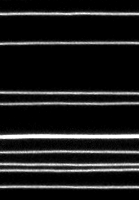Pucadyil Lab
Factors and mechanisms of membrane remodelling
Cells are compartmentalised into various membrane-bound organelles, which are highly dynamic in shape and composition. They are formed and maintained by the constant exchange of proteins and lipids between them through a process involving vesicular transport carriers. These carriers are formed by budding or tubulation of the 'donor' compartment and subsequent fission. Fusion with the 'acceptor' compartment then delivers the vesicular contents and completes the vesicular transport cycle. The throughput and fidelity of vesicular transport pathways relies on a diverse and complex set of proteins, as well as an intricate coordination between the various step of the transport cycle. Remarkably, many of the participant proteins are conserved from yeast to humans, thus highlighting their importance. Furthermore, mutations in many of the participant proteins are linked to various developmental disorders and several pathogens subvert the intrinsic coordination in vesicular transport pathways during infection.
At the Pucadyil lab, we focus on discovering proteins that orchestrate membrane tubulation, fission and fusion and understand their mechanism.
Membrane tubulation, fission and fusion are extremely dynamic processes that involve a myriad of proteins in cells. But at the core of these processes lies the ability of specific proteins to have evolved an ability to overcome the hydrophobic effect, which otherwise ensures that the membrane retains its planar topology. In other words, these proteins manage to bend membrane out of shape - a process collectively referred to as membrane remodelling. We use a bottom-up reconstitution approach that allows recreating membrane tubulation, fission and fusion with specific proteins or their combinations on a define membrane template outside of the cell - a process that is referred to as reconstitution.

For our reconstitution efforts, we use Supported Membrane Templates (SMrT). These templates represent a versatile assay system that displays a wide range of membrane topologies - from planar bilayers to curved membrane tubes.

Membrane tubulation

Credit: Soumya Bhattacharyya
Membrane fission

Our workflow simply involves real-time monitoring of membrane tubulation and fission using fluorescence microscopy.
Credit: Srishti Dar
Read more here...
Division of labor among fission dynamins based on substrate size
Sarkar and Pucadyil (2025) Biochemistry
Reconstituting membrane fission using a high content and throughput assay
Swaminathan and Pucadyil (2024) Biochemical Society Transactions
"Gearing" up for dynamin-catalyzed membrane fission
Khurana and Pucadyil (2023) Current Opinions in Cell Biology
Membrane contacts, lipid flux, and fission
Pucadyil (2023) Molecular Cell
Function and regulation of the divisome for mitochondrial fission
Kraus and Roy et al. (2021) Nature
Bhattacharyya and Pucadyil (2020) Protein Science
Funding sources
HHMI
DBT Wellcome Trust India Alliance
ANRF